When undertaking the Camino de Santiago, every pilgrim should be aware of the symbols that identify this ancient route. The symbols of the Camino de Santiago have their explanation and historical significance, and in some cases, even a function, sometimes very important. In the following article, we analyze what the main symbols you will find on the Jacobean routes are, their meaning, and their practical utility.
Do you know what they are? Do you want to know what they represent and how they can help you in your Jacobean experience? Take note so you don’t miss anything and enjoy every detail on your pilgrimage to Santiago!
What are the most popular symbols of the Camino de Santiago?
Whether you are a novice pilgrim or already experienced, knowing the symbolic elements of the Camino de Santiago is almost a must. In addition to enriching your experience by learning about the history of the Camino de Santiago, you will be able to interpret some symbols that will be useful while walking.
The scallop shell
Perhaps the quintessential symbol of the Camino de Santiago, which has many interpretations and some functionality. The scallop, a bivalve mollusk protected by one flat and one convex shell, is also known as Venera or Pecten jacobaeus.
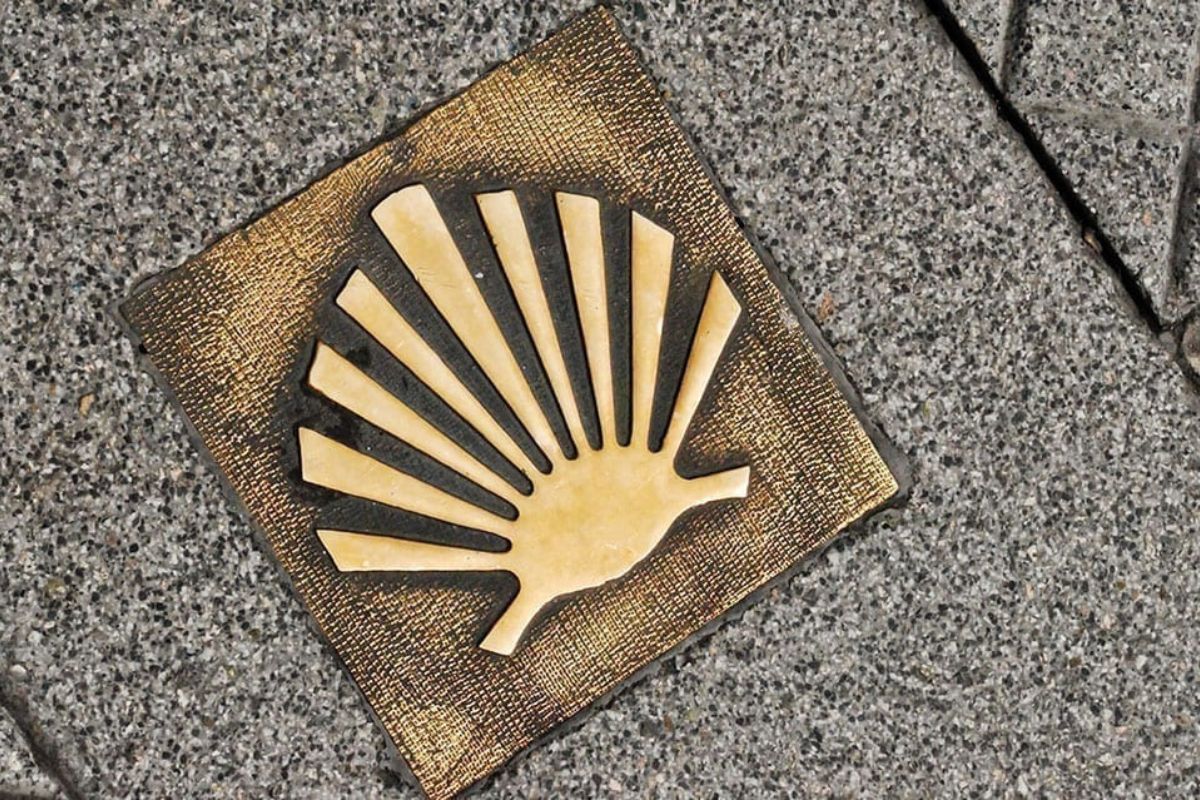
The scallop shell, a classic symbol of the Camino de Santiago
In relation to this last term, its connection to the Jacobean universe is more than obvious. Abundant on the coasts of Galicia, at the origins of the Camino de Santiago, it represented proof that the pilgrim had traveled to Santiago. It thus served as testimony to the pilgrimage, and therefore, it was like the current Compostela certificate. Additionally, the curved shape of its lower shell served as a scoop for drinking water and even eating.
Already mentioned in the 12th century in the Codex Calixtinus, they were given to pilgrims, who placed them on their garments. There was even a guild of scallop sellers, the concheiros: evidence of this is the street that still exists today in Santiago de Compostela.
A central element of Santiago’s miracles, as for its symbolism, there are different interpretations of its meaning:
- the birth of a new man after the pilgrimage and redemption of sins;
- the Jacobean routes converge in Santiago, just as all the striations of both shells converge at a single point.
The Cross of Santiago
No less important than the previous one, it symbolizes the role of Saint James the Apostle as a knight and soldier. This peculiar-looking cross is characterized as a Latin cross of gules. Its red color represents the blood of the apostle James in his martyrdom, which was by beheading with a sword. In fact, its shape mimics that of a sword with a fleur-de-lis form in the hilt and arms.
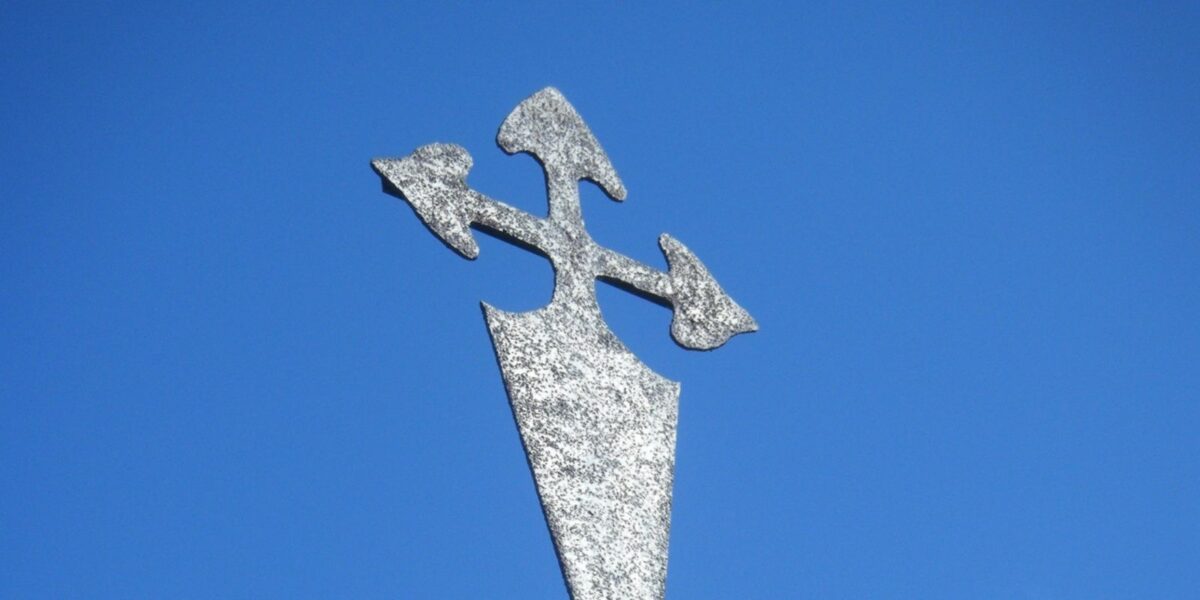
The Cross of Santiago, a classic symbol of the Camino de Santiago
Its historical origin is linked to the Order of the Knights of Santiago, defenders of the pilgrims against Saracens and other dangers. The mentioned red color could also represent the blood of these knights spilled in defense of Christians.
Today, it can be found decorating the delicious Santiago cakes, a sweet from the Galician gastronomy that you must not miss on your pilgrimage.
The yellow arrow
Perhaps the most recognizable symbol of the Camino de Santiago, and the most useful, since it is the main element of signage on the Jacobean routes. These iconic yellow arrows are visible on walls, trees, stones, and floors, generally at crossings, to indicate the direction to take.
This orientation system was implemented in the early 1980s by the initiative of Elías Valiña Sampedro, parish priest of O Cebreiro. The signage project was born out of the need to facilitate the passage of pilgrims throughout the French Way. However, as early as 1974, the section between Zubiri and Larrasoaña was marked by a historic pilgrim, collaborator of don Elías along with other volunteers.
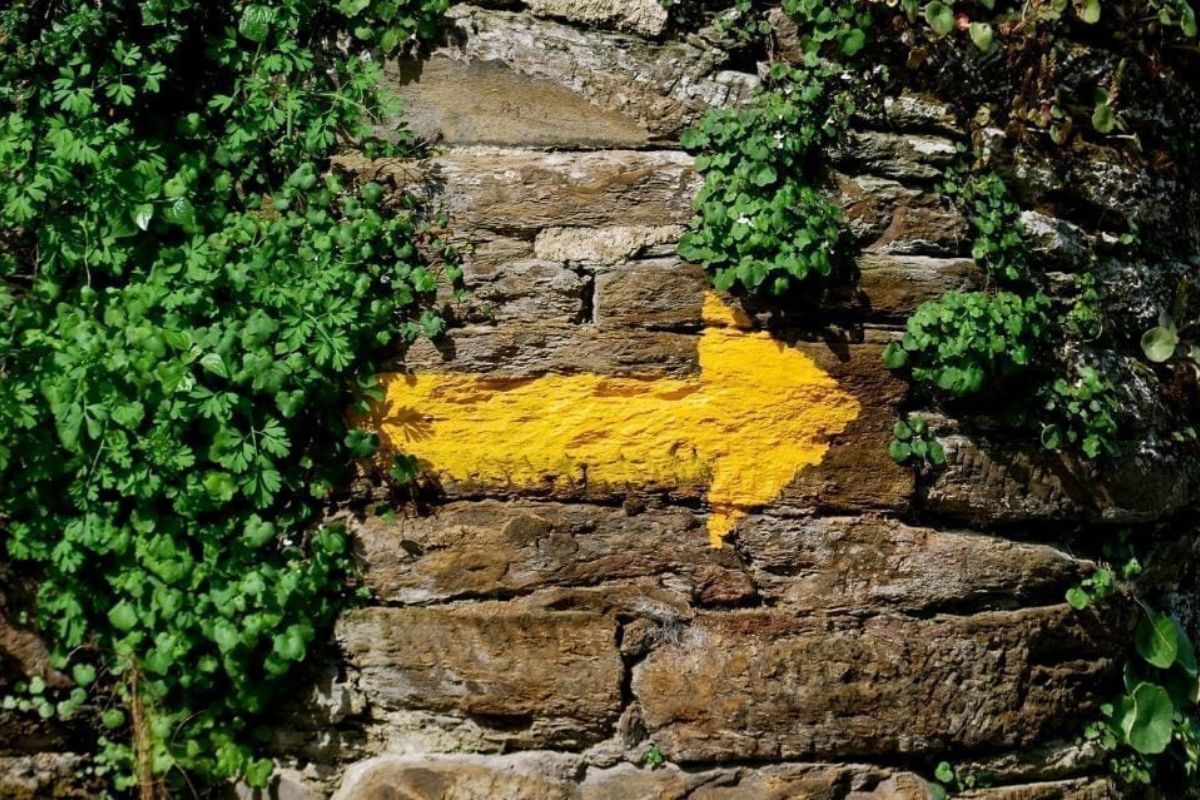
The yellow arrow, one of the most important symbols of the Camino
The milestones
The milestones, markers, or stone posts are another classic element of the Camino de Santiago, as well as an unequivocal sign of being on it. Born between 1986 and 1987, the first ones were placed in the province of Lugo along the French Way. In 1989, the same was done in the province of A Coruña, thus marking the entire Galician French Way with milestones.
From 2015, there was a plan to replace the old ones and place new milestones on all the official routes in Galicia by the Galician government. Now uniform, these are granite markers of trapezoidal shape that indicate the direction to Santiago with an engraved yellow arrow. They also include a tile with the scallop shell, as well as the kilometric point of the remaining distance to Santiago de Compostela.
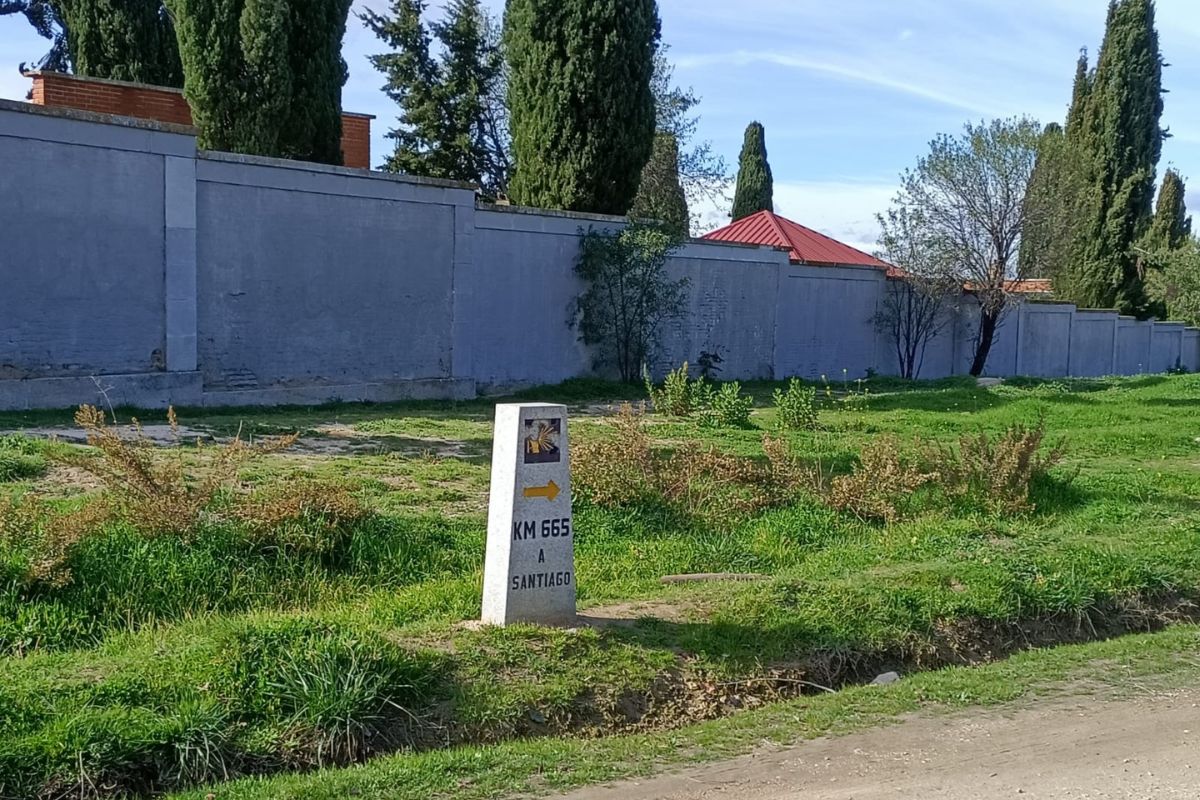
A milestone on the Camino de Santiago from Madrid
The pilgrim’s staff
Popularly known as a staff, it is one of the typical accessories for any pilgrim, although not all use it. This extra support point will be very useful to reduce the impact on ankles and knees, especially on descents. However, it will also serve as a support point on ascents and steep areas.
In the past, it was also used to hang utensils, pick fruit from trees, and protect against wild animals that could be encountered on the Way. Gradually, this traditional staff has been replaced by popular trekking poles. However, if you are a pilgrim of the old school and a romantic, this is undoubtedly your best option.
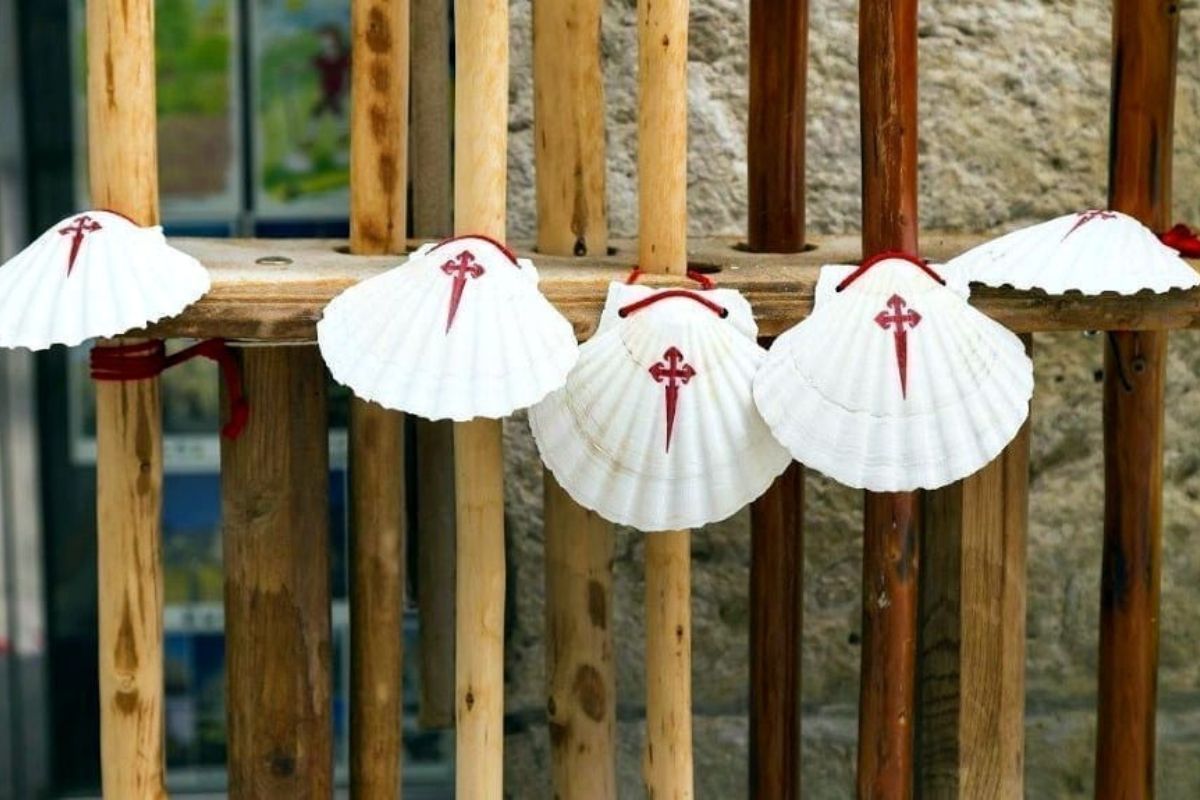
The staff helps the pilgrim
The gourd
Like the staff, the gourd emerged as a method to facilitate the life of pilgrims. It was formerly used as a practical and economical way to carry liquids and keep them cool. Currently, it lacks practical value, but it does have a strong symbolic charge. It is common to see pilgrims adding this accessory to their outfit or still hanging it from the staff as in the past.
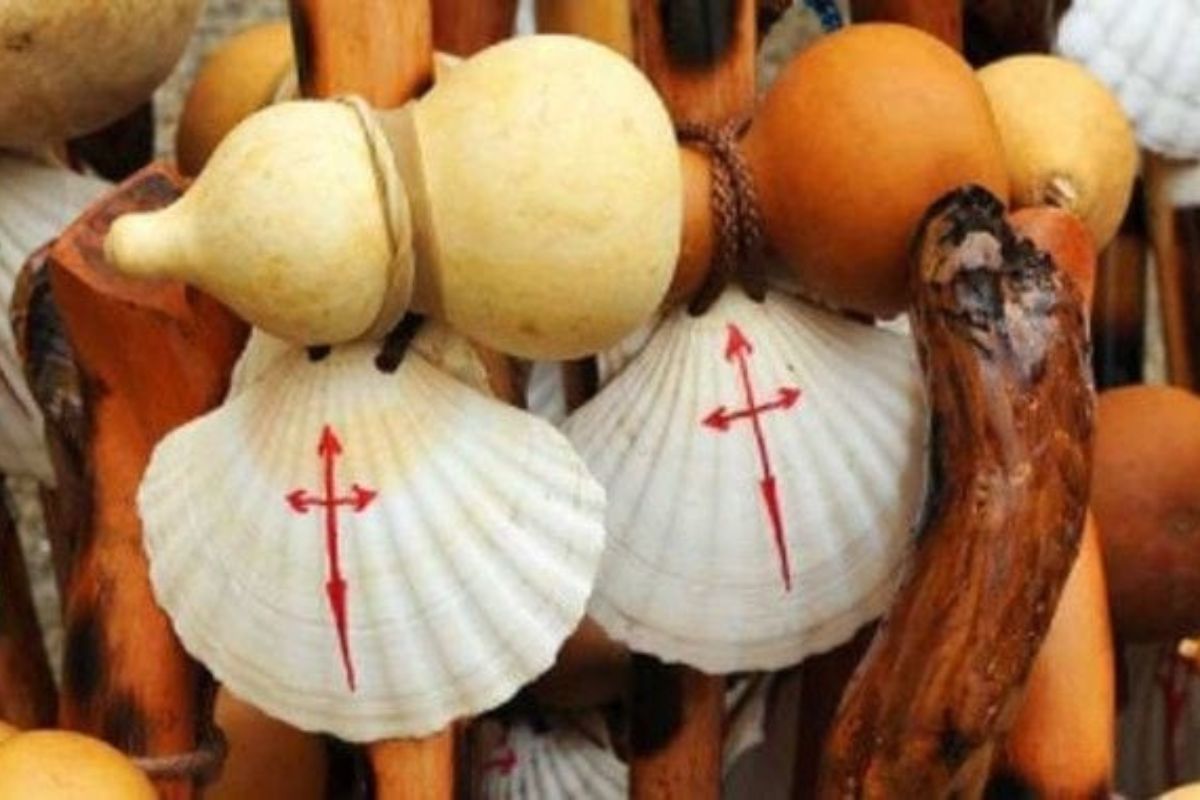
The gourd is a symbol and an useful tool for the pilgrims
The Credential and the Compostela
Also known as the pilgrim’s passport, the Credential is the essential document that every traveler must carry. It is a personal booklet for each pilgrim and has spaces to be stamped along the Way.
This document serves to certify the distance traveled and at the same time allows obtaining the Compostela upon arriving in Santiago, as recognition of the completed Way. To obtain it, one must travel at least 100 km if walking, or 200 km if choosing to do the Way by bicycle.
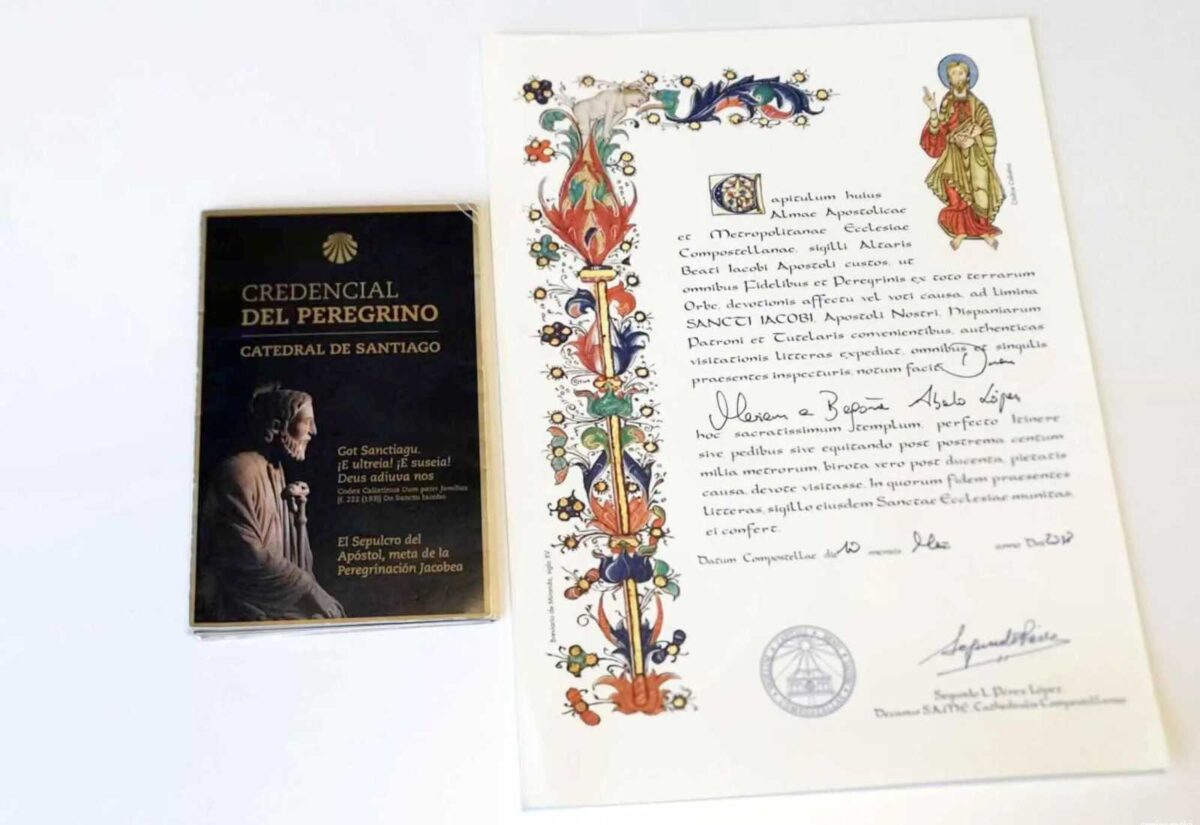
A Credential and its corresponding Compostela
The botafumeiro
Lastly, upon arriving in Santiago, every pilgrim wishes to see this huge incense burner fly through the transept of the Cathedral. Its existence has been known since the 14th century, and its use is justified for two reasons:
- functional: to scent the Cathedral, as pilgrims used to sleep inside it in the past, and the smell was sometimes unbearable;
- religious: just as the smoke flies high, so should the prayers of the faithful.
The Botafumeiro operates free of charge on specific days of the year, when liturgical festivals are celebrated in the apostolic temple. However, pilgrims can request it with a donation to the Cathedral.
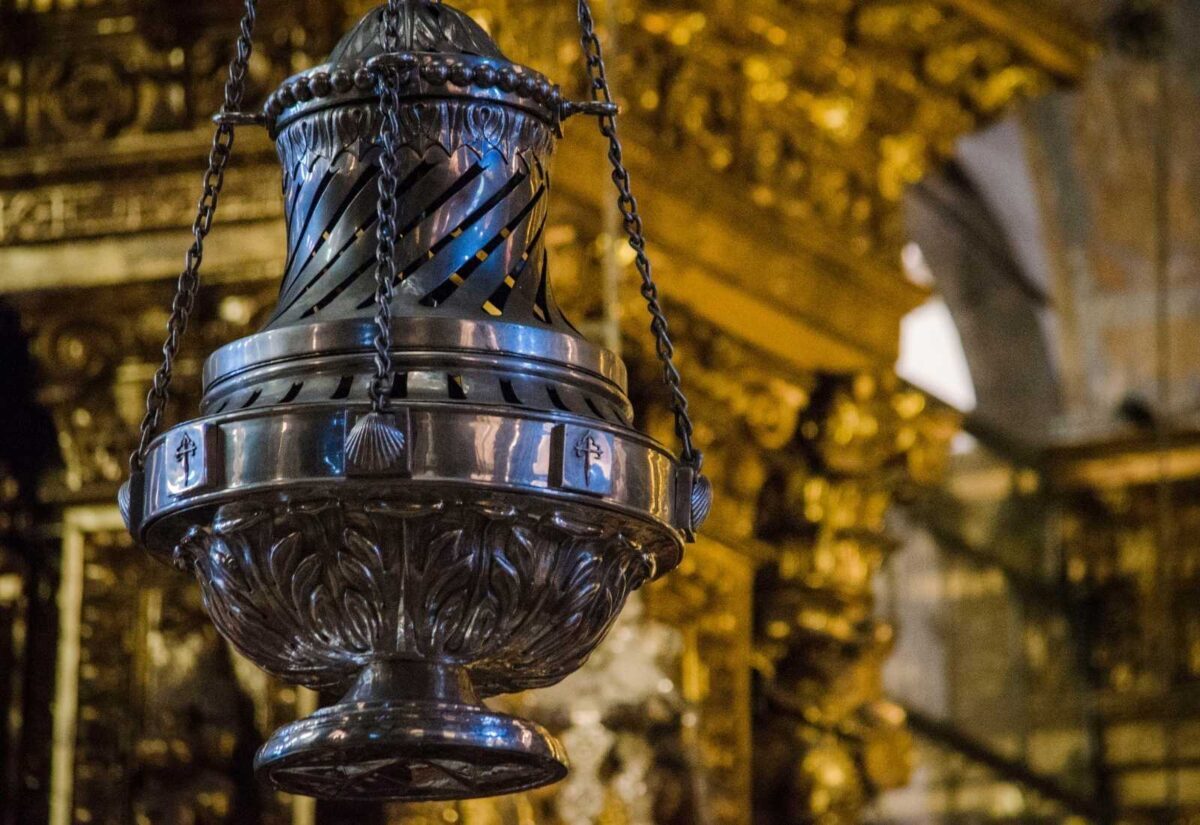
The botafumeiro, an icon of the Camino
Symbols of the Way: tradition, utility, and souvenirs
We could mention some more elements as symbols of the Way, as they represent the pilgrimage and its protagonists, the pilgrims: backpack, hat, etc. Many originate from tradition and religiosity, and are also of great utility. And of course, in many cases, many become souvenirs and memories of the pilgrimage, whether real or in small-scale reproductions.
In any city of the Way, and especially in Santiago itself, you can get some of them, whether for decoration, use, or as gifts. So now you know, now that you are much more familiar with the Jacobean universe and its symbols, it is time to embark on your adventure on the Camino de Santiago.

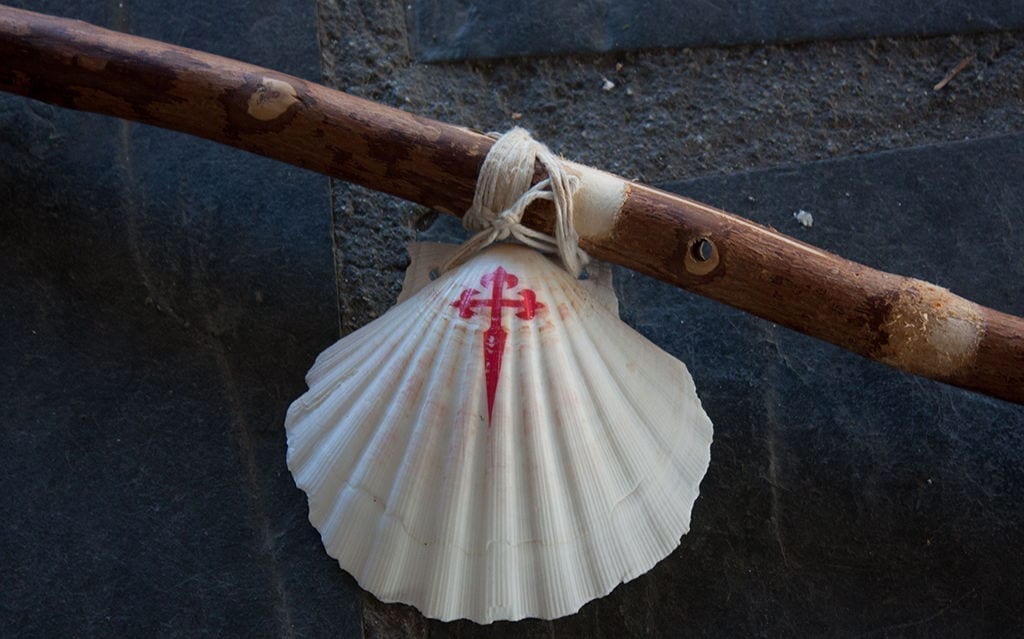










Dear team from Follow the camino,
recently a friend of mine received a photo taken in a certain way of the french Camino, and she noted a rather strange symbol carved in the ground. The symbol seems a combination of others, but we couldn’t crack it in a whole.
Would you assist us on it?
Kind regards,
Luiz F. P. Sampaio – Brazil.